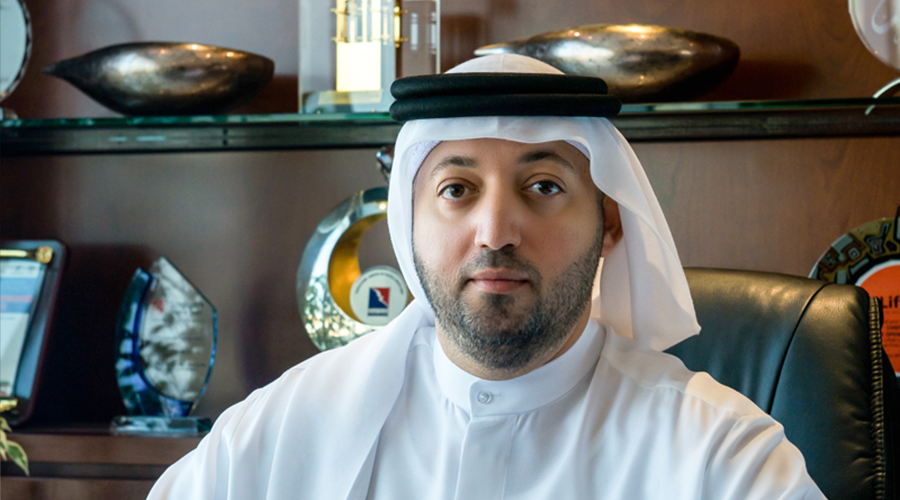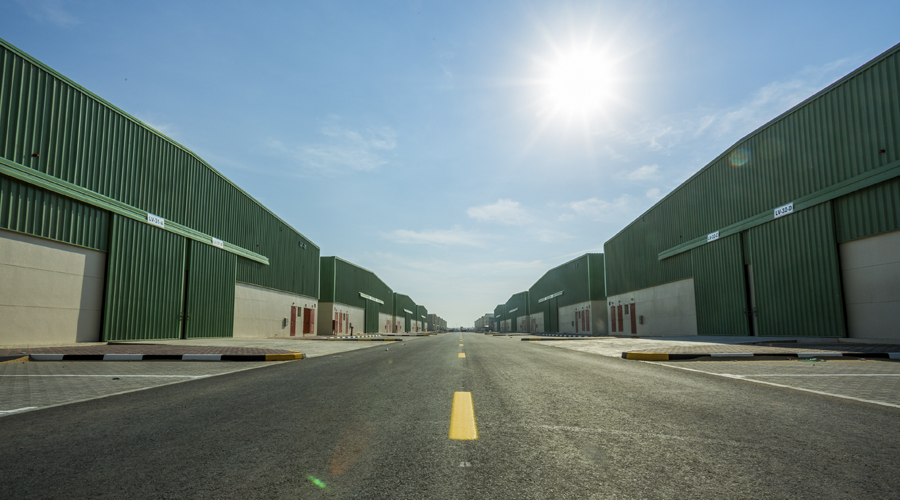
Two-way trade between the UAE and China was in excess of $35 billion in the first nine months of 2017. As Chinese companies look to boost their trade links with the Emirates, Sharjah and its two free zones, Hamriyah and Sharjah Airport International Free Zone (SAIF), are uniquely positioned to create the kind of microclimates that foster business growth and provide a springboard into the wider Middle East, Africa and Asia markets. The director of both free zones, Saud Salim Al Mazrouei, explains their advantages and how they make doing business easy
As director of both free zones, you are in charge of some of Sharjah’s most important economic activities in international trade. What is Sharjah’s current state of connectivity?
Sharjah’s connectivity with China is very important. The free zones play a big role in making sure that bilateral trade between both countries grows, and we facilitate services to make sure that Chinese companies will grow and view the free zones as a platform to access the Middle East and the greater MENA (Middle East and North Africa) region. Our goal is to provide them with a one-stop service, give them easy access to nearby and emerging markets, and to identify their requirements. We aim to always provide the most cost-effective solutions and the best possible services. Anyone can set up a company in the free zones in 60 minutes, and that is an incentive for them to start operating in Sharjah, then expand to the Middle East and MENA region.
How much room is there for growth in international trade?
The opportunities are there. Both free zones are building infrastructure. At SAIF we are developing road networks, utility networks – power, water and electricity – warehouse infrastructure, office infrastructure and accommodation. We have close ties with other government agencies to ensure that we reach the right clients and that we can provide them with the kind of platform that they need. It’s all about providing the right logistics and facilities to make sure they have the best standards when it comes to infrastructure, services and third-party services. We are not only looking at it from a free-zone point of view; we are also looking at it from a client’s point of view. We are always in touch with our clients to make sure that their demands and requirements are met.

You started off with 55 businesses in 1995, and now you boast 6,500 companies and counting. What explains this phenomenal growth?
What was important to us from the beginning was to integrate with the industries, to understand them and to develop platforms and services that would be customized to their needs in order to make them grow. We wanted to bring added-value services and third-party services to make those sectors grow consistently throughout the years. Today the Hamriyah Free Zone is a leading steel hub with over 170 manufacturers who are undertaking projects around the world, including the United States, Europe, the Middle East and Africa. We cultivated that sector, and looked at areas where we might save money for our clients through time and risk management, offering services that are completely flexible and hazard-free. We are very happy to see that down the years this sector has grown significantly and it is now one of the leading industries in the UAE. A lot of the projects you see in the UAE market have been partly manufactured in the Hamriyah Free Zone, and we are very proud of that.
What other sectors do the free zones specialize in?
Some of our key sectors in Hamriyah are food, maritime, petrochemical, chemical, construction and commodity projects. At SAIF we have focused on logistics, aviation, the perfume sector, textiles and garments, as well as specialized sectors requiring high standards of warehousing. Our goal is always to understand our clients and develop services for them to grow. We try to customize our service on a case-by-case basis to make sure that our clients are happy. Right now we want to attract sectors that do not currently exist in the UAE, and so we have brought the first white oil producer in the Gulf. White oil is a by-product of petroleum, essentially a lubricant for power transformers, and most of the white oil in the Gulf area comes from India. We brought India’s biggest company to Hamriyah, and it started operating here last year. This company exports around the region and to Africa as well. This is a good example of what we aim to do: target specialized sectors and develop them right here.
What is your competitive value within the UAE, which is already home to dozens of free zones?
Any investor wants to look at opportunities and cost-effective options. They want to see added-value services that will help them grow. They want easy access to services. We always look to provide five-star service for our clients. We offer packages and we offer the best deals in the market. And we are getting a lot of clients who are benefiting from our cost-effectiveness and services.
Why do you focus on China out of all the markets in the world?
China is a very big economy, and their Belt and Road Initiative means it is very important for them to have distribution centers in the region in order to grow and expand. Sharjah and its free zones can provide just the right platform for that.
What are your thoughts on China’s $1 trillion foreign development program?
It will benefit and add value to both countries. The platforms are there, the services are there, and we are here to support that project as investors seek distribution points and assembly units. They need links for regional distribution, which is now more important than global distribution. We are here to provide that.
You are in Phase 3 of the SAIF zone. Are there opportunities for investors there?
We are financing all of our projects, building warehouses, offices and amenities such as restaurants and more. For investors, we facilitate locations, roads, and utility distribution within the free zone. Chinese companies surely have projects that they want to discuss, and we are happy to discuss them.
What is the economic impact of the free zones on the people of Sharjah?
These are the two largest free zones in Sharjah and they have provided many economic benefits to the emirate and to the UAE as a whole. We have 1,000-plus industries in all sectors, which illustrates our might. Trade is a very important item that we promote, and we are also developing the services sector. The free zones are part of the local economy, and our goal is to secure FDI from abroad. Over 164 countries have invested in our free zones, so we are already very international – but we are always looking out for new opportunities.
As head of Sharjah’s two major free zones, what have you learned about doing business and attracting investment in these 18 years?
The most important thing with any investor is to listen to them and find out what they really want. It’s not so much about selling them something as about providing what they need. Each customer is different, and the client often wants to know whether there are any other services that will complement their own business. In the petrochemical sector, we recently signed with the fourth steel drum factory in the UAE, and they are going to produce one billion barrels a year when they start production. This will add mileage to the petrochemical sector within the Hamriyah Free Zone, where we already have 60-plus petrochemical companies. That was our strategy from the very beginning: to add that extra mileage of service. And we continue to listen. The learning curve changes from year to year, so we have to develop along with our clients.